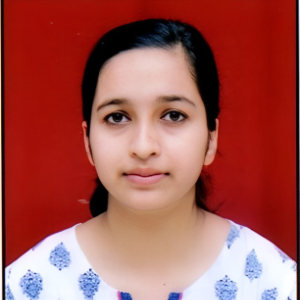Title : A novel magnetic floral waste biochar for efficient removal of cationic dye from wastewater: A sustainable and economical approach
Abstract:
Waste produced by agro-industrial processes is an alarming issue that has to be addressed. Waste valorization is an effective technique for tackling this issue. One of the latest techniques for adsorption, energy storage, air purification, catalysis, and biogas generation that is prominent these days is the synthesis of biochar from bio-waste. Magnetic Tagetes spp Biochar (γ-Fe2O3-TSB) was synthesized from Tagetes spp flower and was magnetized using iron oxide via co-precipation method. Magnetization of biochar improves its functionality and facilitates its separation. γ-Fe2O3-TSB is employed to remove Methylene Blue (MB) dye from an aqueous solution. Methylene blue is a well-known and commonly utilised cationic-azo dye in the printing and textile industries. Since MB is known as a carcinogen, the primary concern is its accumulation in wastewater. Adsorption experiments were performed employing γ-Fe2O3-TSB to examine the removal of MB dye. These studies investigated the impacts on various adsorption-influencing factors, such as the initial concentration of MB dye, the dosage of γ-Fe2O3-TSB, the effects of pH, the duration of contact, and the adsorption isotherms. Characterization techniques such as FTIR, VSM, XRD, RAMAN, SEM, BET, and Zeta potential were used to characterize γ-Fe2O3-TSB. The adsorption isotherm mechanism of γ-Fe2O3-TSB has been adequately explained by the non-linear Langmuir isotherm model, resulting to an excellent adsorption capacity (qe = 48.6 mg/g). The thermodynamics studies indicated that the adsorption of MB onto the γ-Fe2O3-TSB surface occurred spontaneously, endothermically followed by pseudo-second-order kinetics. The cost assessment for the lab-scale production of γ-Fe2O3-TSB comes out to be negligible. Results obtained from this study suggest that the magnetized biochar derived from Tagetes spp flower has a wide range of potential applications in the treatment of dyeing wastewater. Thus, it can be promoted as a potential mechanism to maintain the environmental sustainability at wider scales.
Audience Take-Away:
- Audience can learn to synthesize biochar from biological waste
- Audience will learn to magnetize biochar for easy separation
- Audience will learn to utlize agricultural waste effectively
- Audience will use this study to synthesis of biochar from different food waste
- This study will help audience to learn the use of magnetic biochar via adsorption of toxic chemicals
- Understand the adsorption phenomenon that is economic and greener way to remove toxic chemicals from waste water
- Methodology can be optimized for designing new methods of magnetic biochar synthesis
- Further this study can be used for treatment of waste water



